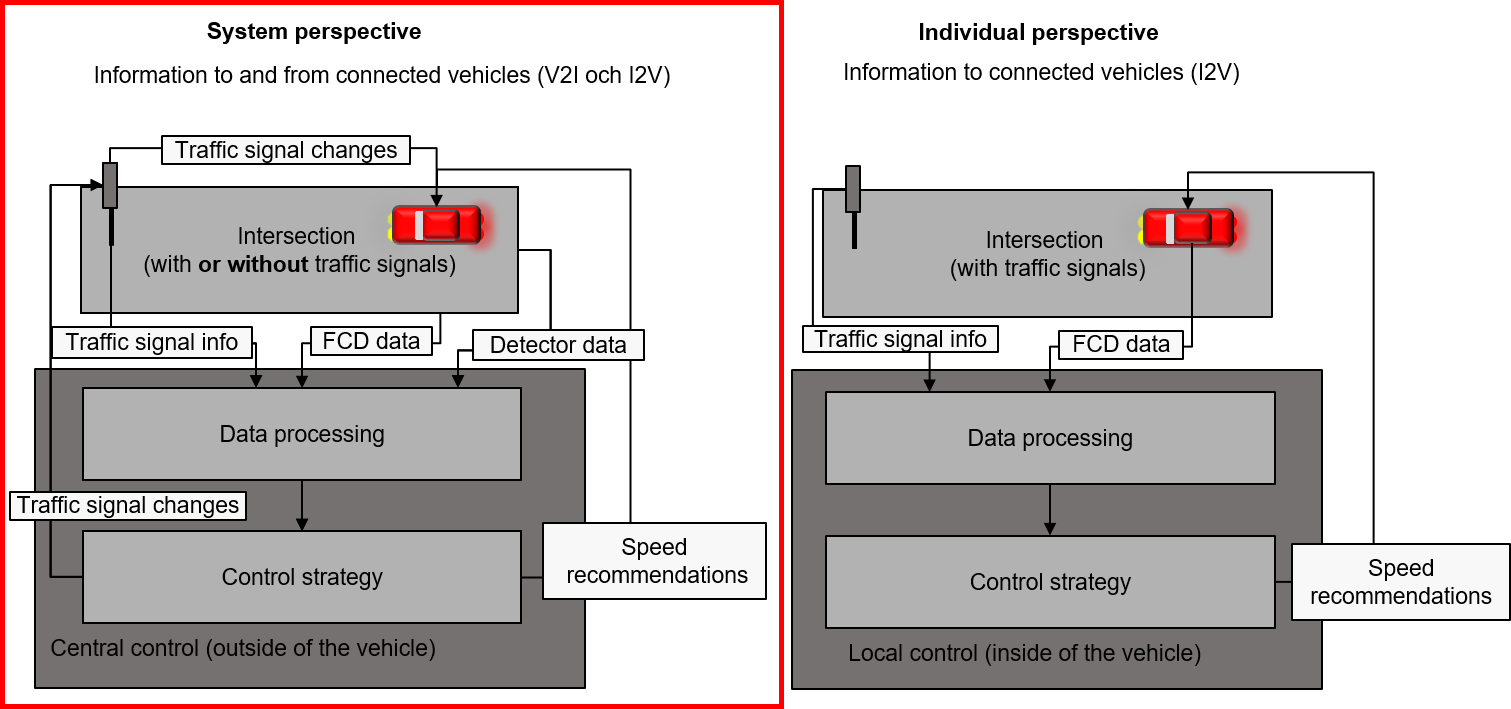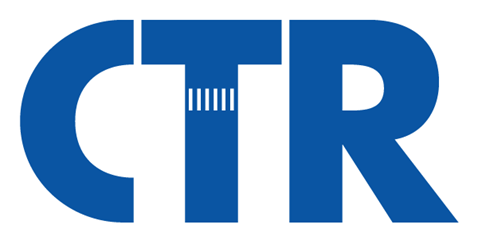Evaluation of connected vehicles in signalised intersections
Traffic signals are one of the oldest and most widespread Intelligent Transport Systems. They are used in most cities to control traffic flows at intersections. By integrating traditional traffic signals with so-called cooperative systems, where vehicles and the infrastructure can exchange information through some type of communication, the traffic signals could be optimized not only based on traffic flows from loop detectors but also based on more detailed knowledge from individual vehicles such as information about location, speed and possibly also acceleration.
In Sweden, most existing traffic signals are vehicle actuated, i.e. when a vehicle is approaching a signalized intersection it is reporting it’s appearance through detection from stationary sensors/detectors. LHOVRA is the most common control strategy in Sweden. It is an actuated control strategy for independent intersection, developed by Vägverket (later Trafikverket). Originally it consisted of a method called the time gap (tidlucka) method. The method is based on that vehicles are passing one or more detectors with a certain time gap. The time gap is used to calculate the green time needed. In later versions, the time gap method is extended by including more details in the decision algorithm. Examples are that yellow and red times are designed as actuated variables and logics related to the detectors have been extended to include prolonging of optimal signal group status with optional intervals.
This project aims at increase the knowledge of the effects of introducing connected traffic signals in traditional traffic signals and especially the Swedish LHOVRA. The choice of the studied control strategies is based on a literature study, as well as workshops with relevant stakeholders. The control strategies are evaluated through a microscopic traffic simulation study. Focus is on improving the performance of the traffic system in terms of traffic efficiency and safety as the left part of Figure 1 indicates. The connected vehicle is in that case used for sharing information to optimize the traffic signal settings or to apply an individual control strategy to the connected vehicle through optimization of the traffic system. However, also individual control strategies might be considered, where the connected vehicle is optimized based on information from the traffic signal settings, as in the right part of Figure 1.
The project is carried out by VTI and is funded by Trafikverket via Centre for Traffic Research (CTR).




